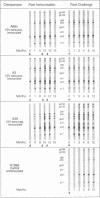Abstract
Two human immunodeficiency virus (HIV)-seropositive chimpanzees (A-3 and A-86c) infected 4 yr earlier with HIV, along with one uninfected animal (A-36), were inoculated intramuscularly three times in a year with a gamma-irradiated gp120-depleted HIV immunogen in incomplete Freund's adjuvant. Both previously infected animals promptly developed an anamnestic humoral antibody response after the first dose, and the uninfected animal developed a primary humoral response to the first dose and then an anamnestic response to the second dose. Although HIV had been recovered repeatedly from the seropositive animals, they became persistently virus-culture negative at the time of or just before the first inoculation of the immunogen. Intravenous challenge with 40 chimpanzee-infectious-doses of a heterologous HIV strain (HIVIIIB) was done 4 mo after the third inoculation in the three treated chimpanzees and in an untreated control animal (A-189a). The immunized naive animal (A-36) and the unimmunized control (A-189a) became infected, and virus has been isolated from their peripheral blood mononuclear cells for greater than 2 yr after challenge. However, the two previously infected chimpanzees (A-3 and A-86c) resisted challenge and have remained virus negative by peripheral blood mononuclear cell cocultivation for greater than 2 yr of observation after challenge; moreover, no evidence of reinfection was detectable by PCR. Despite the in vivo resistance, however, peripheral blood mononuclear cells from the resistant animals (A-3, A-86c) remained susceptible to infection by HIV in vitro. These findings reveal that a state of immunity can develop and/or be induced to control and/or prevent HIV infection in the chimpanzees. In the absence of any detectable level of neutralizing antibody in A-3 and a low level in A-86c, the patterns of the responses to challenge seen in the four animals suggest that the cell-mediated immune mechanism must have played a significant role in the resistant chimpanzees both in control of their HIV infection and in their resistance to challenge.
Full text
PDF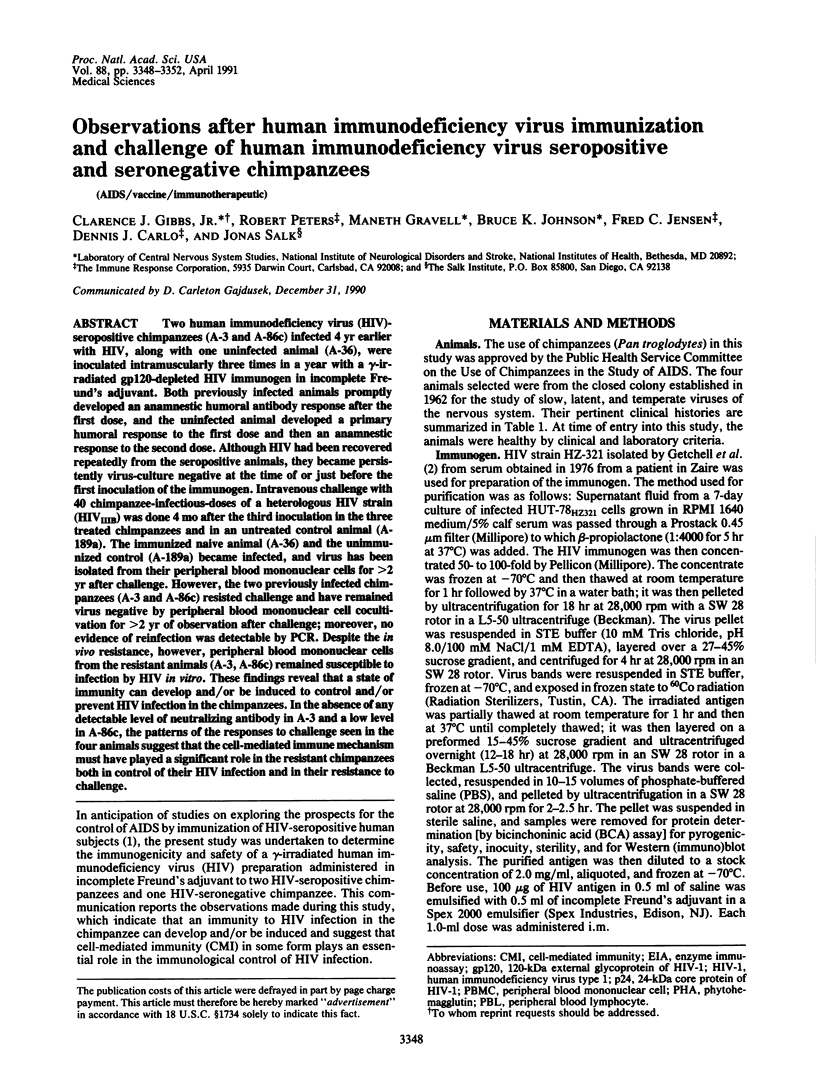
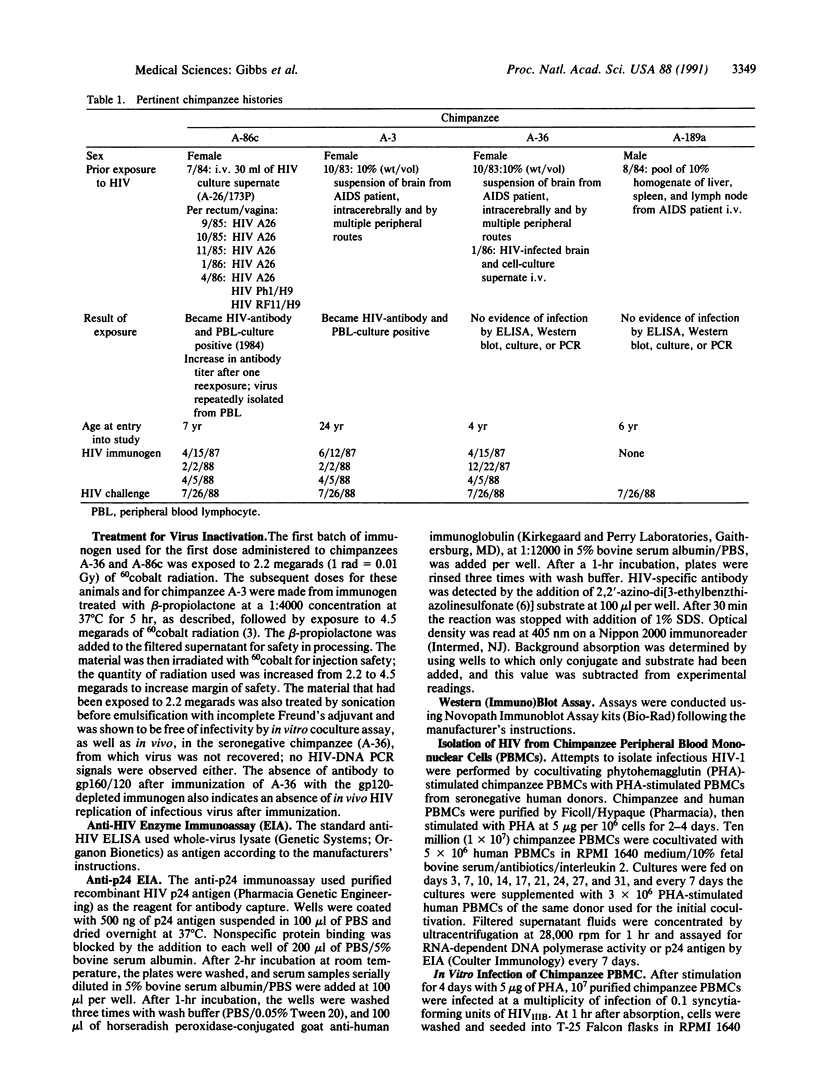
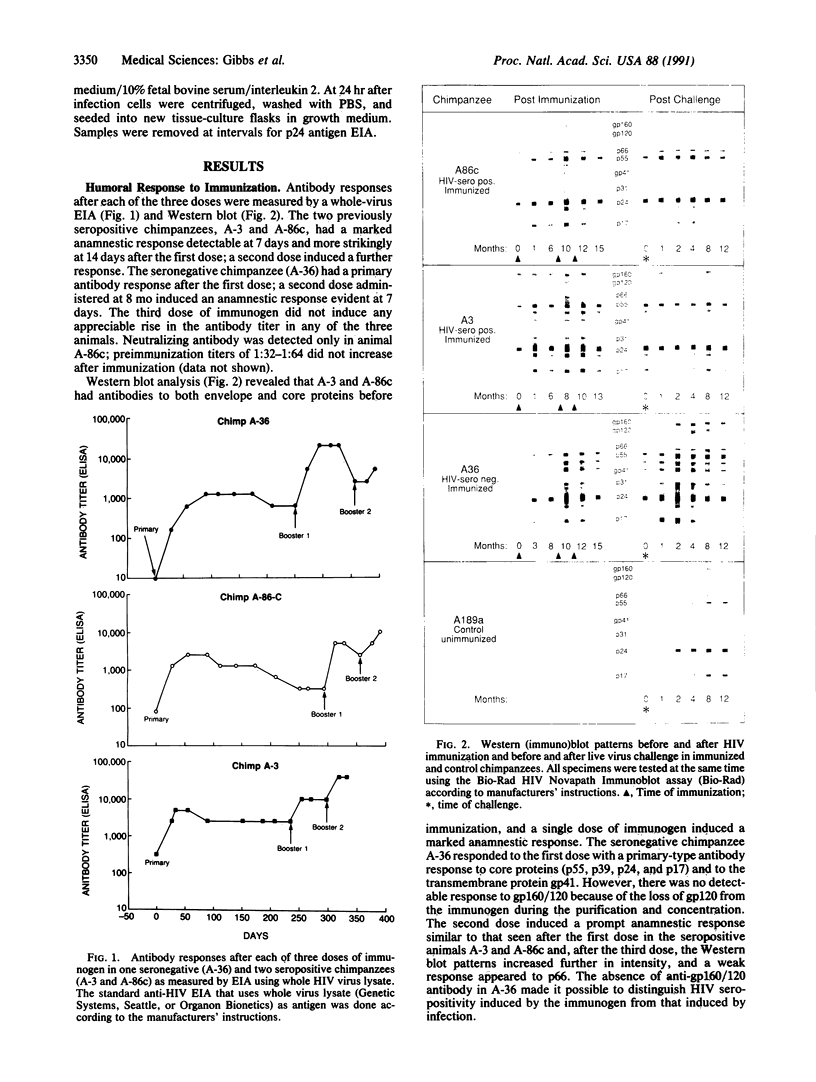
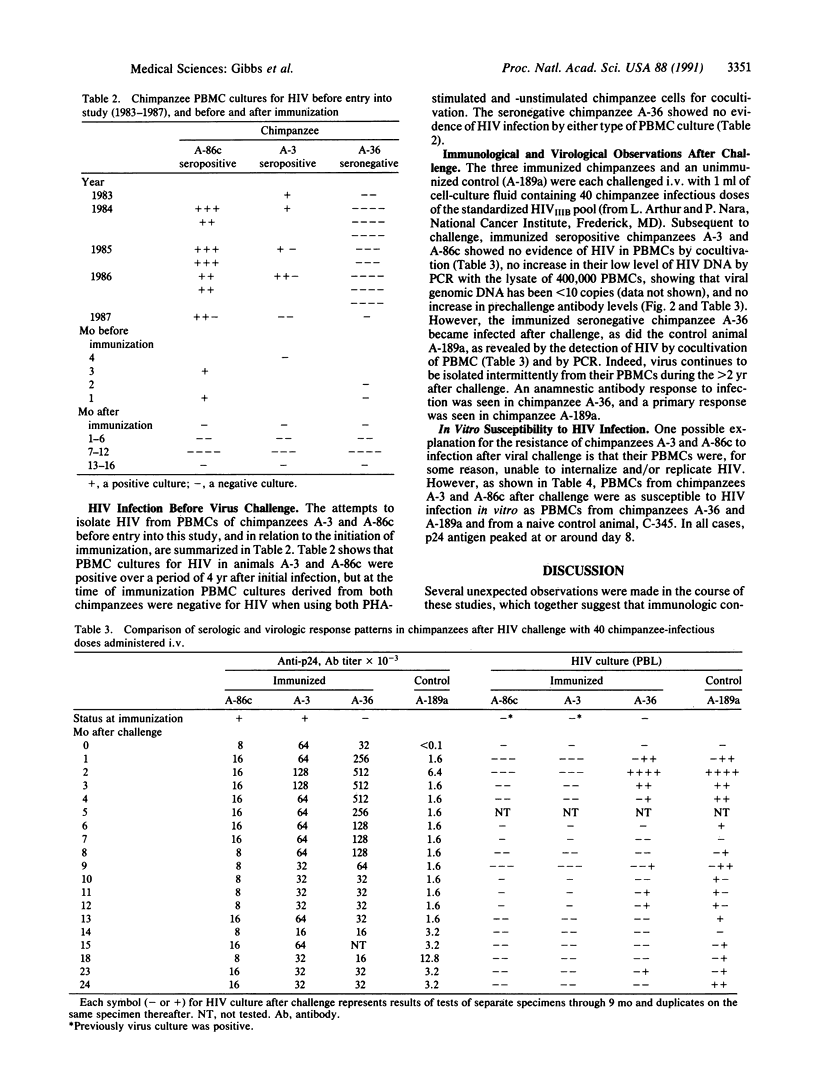
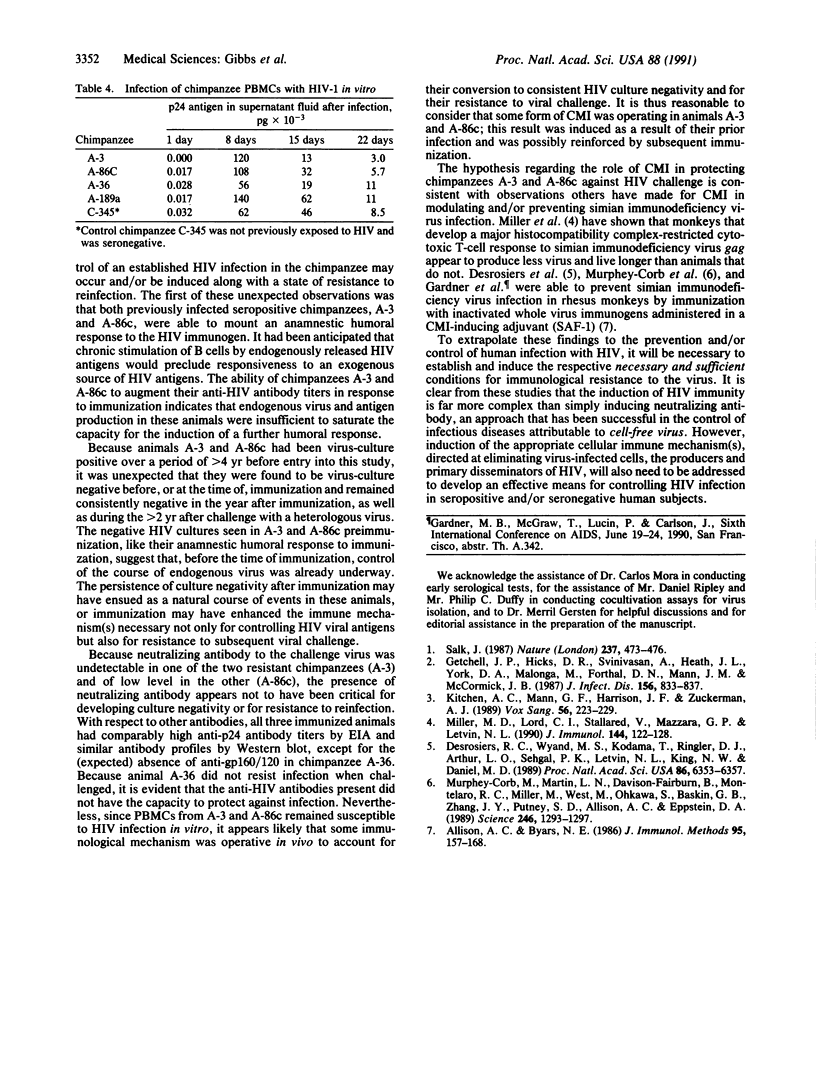
Images in this article
Selected References
These references are in PubMed. This may not be the complete list of references from this article.
- Allison A. C., Byars N. E. An adjuvant formulation that selectively elicits the formation of antibodies of protective isotypes and of cell-mediated immunity. J Immunol Methods. 1986 Dec 24;95(2):157–168. doi: 10.1016/0022-1759(86)90402-3. [DOI] [PubMed] [Google Scholar]
- Desrosiers R. C., Wyand M. S., Kodama T., Ringler D. J., Arthur L. O., Sehgal P. K., Letvin N. L., King N. W., Daniel M. D. Vaccine protection against simian immunodeficiency virus infection. Proc Natl Acad Sci U S A. 1989 Aug;86(16):6353–6357. doi: 10.1073/pnas.86.16.6353. [DOI] [PMC free article] [PubMed] [Google Scholar]
- Getchell J. P., Hicks D. R., Svinivasan A., Heath J. L., York D. A., Malonga M., Forthal D. N., Mann J. M., McCormick J. B. Human immunodeficiency virus isolated from a serum sample collected in 1976 in Central Africa. J Infect Dis. 1987 Nov;156(5):833–837. doi: 10.1093/infdis/156.5.833. [DOI] [PubMed] [Google Scholar]
- Kitchen A. D., Mann G. F., Harrison J. F., Zuckerman A. J. Effect of gamma irradiation on the human immunodeficiency virus and human coagulation proteins. Vox Sang. 1989;56(4):223–229. doi: 10.1111/j.1423-0410.1989.tb02033.x. [DOI] [PubMed] [Google Scholar]
- Miller M. D., Lord C. I., Stallard V., Mazzara G. P., Letvin N. L. The gag-specific cytotoxic T lymphocytes in rhesus monkeys infected with the simian immunodeficiency virus of macaques. J Immunol. 1990 Jan 1;144(1):122–128. [PubMed] [Google Scholar]
- Murphey-Corb M., Martin L. N., Davison-Fairburn B., Montelaro R. C., Miller M., West M., Ohkawa S., Baskin G. B., Zhang J. Y., Putney S. D. A formalin-inactivated whole SIV vaccine confers protection in macaques. Science. 1989 Dec 8;246(4935):1293–1297. doi: 10.1126/science.2555923. [DOI] [PubMed] [Google Scholar]
- Salk J. Prospects for the control of AIDS by immunizing seropositive individuals. Nature. 1987 Jun 11;327(6122):473–476. doi: 10.1038/327473a0. [DOI] [PubMed] [Google Scholar]



